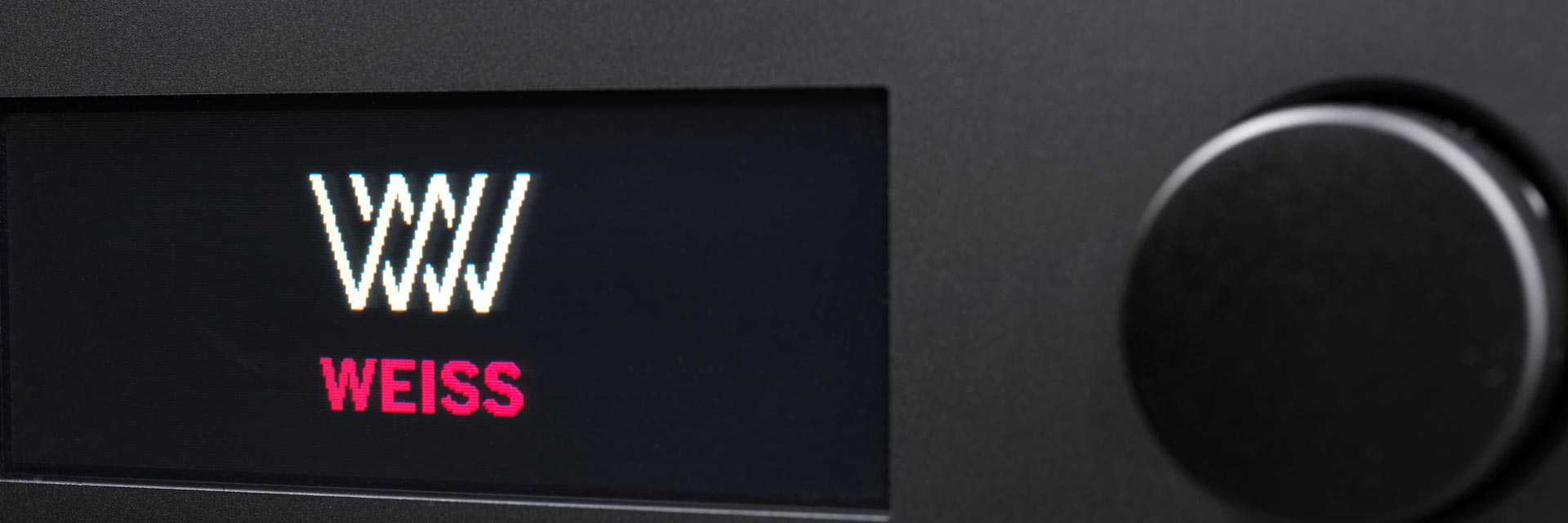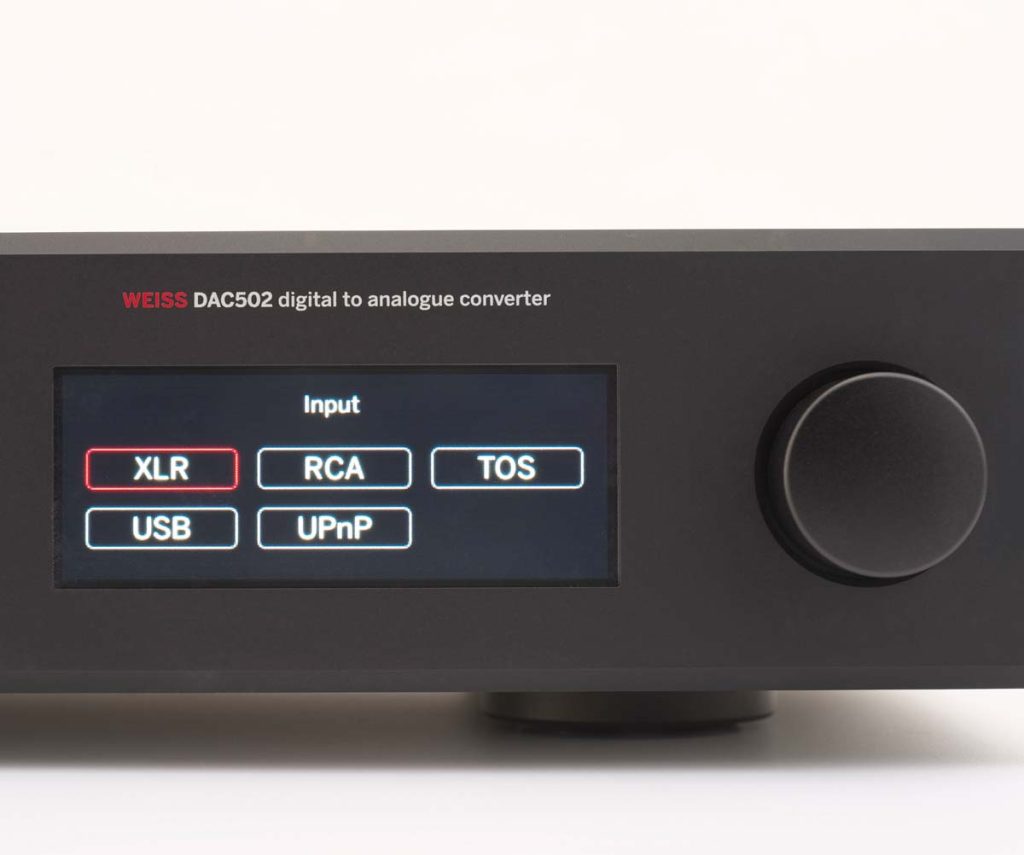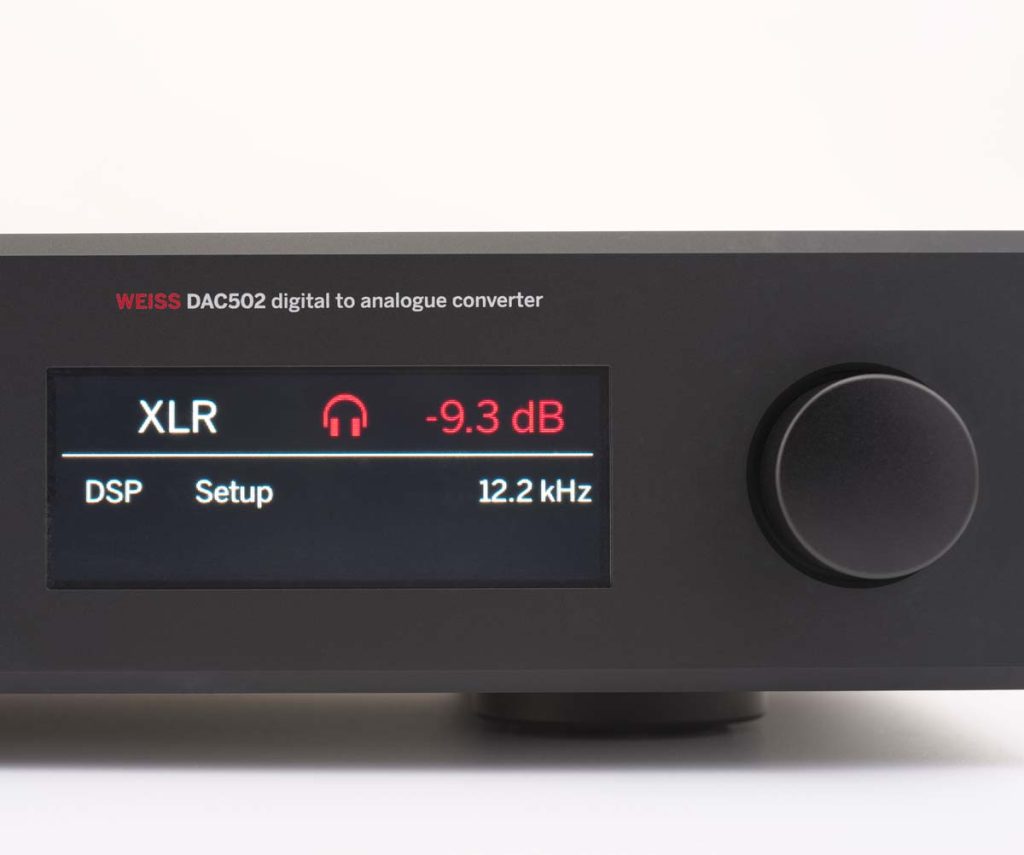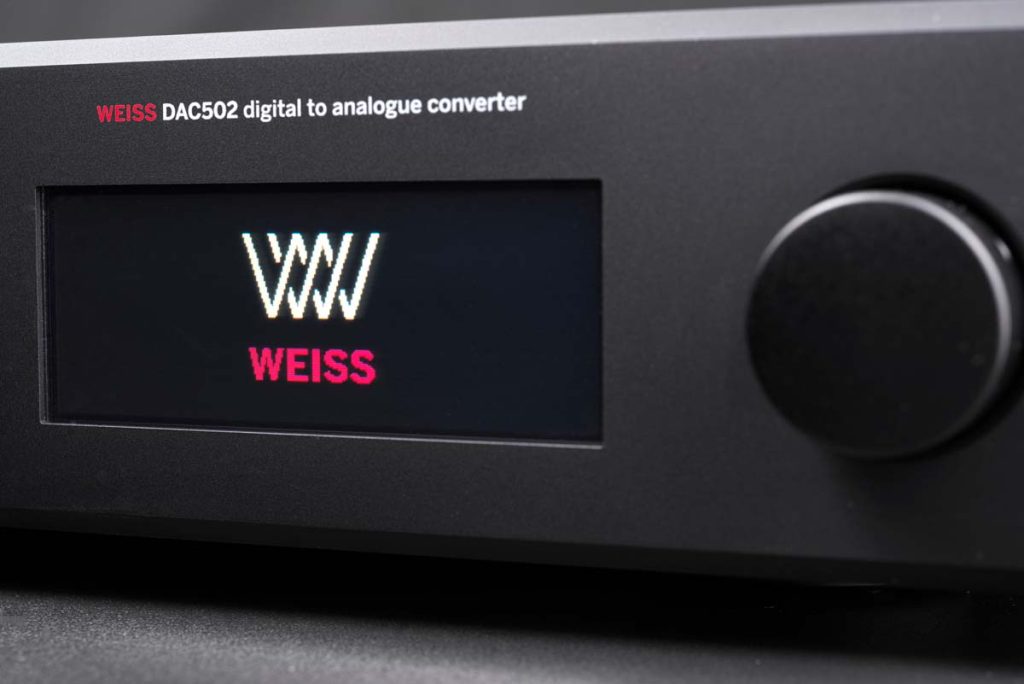The Weiss Is Right
Whenever world-renowned audio expert Daniel Weiss releases a new converter, sound conoisseurs are guaranteed a real treat – his DAC 502 is setting yet another benchmark for a new class of devices.
Daniel Weiss, one of the real heavyweights in the audio scene, has been developing groundbreaking products for his company Weiss Engineering Ltd, and with a characteristically Swiss flair for engineering, for a solid 30 years now. The company, based in the canton of Zürich, makes both professional-level devices as well as top-quality products for hi-fi enthusiasts. Weiss converters above all are held in exceptionally high esteem by mastering engineers and high-end fans with excellent ears. In recent years, the Swiss have forged ahead with the development of hi-fi devices in particular, and in large part to keep up with the digitalization trend. As such, the current shining star of their product range and today’s test device, the DAC 502, is a real state-ofthe-art converter.
Daniel Weiss says: “The current trend is for simpler audio systems: a typical modern configuration consists of a streamer and active speakers. The DAC 502 can stream via UPnP and hence assume the role of streamer and preamplifier.” Such a minimalist setup means the streamer must also be able to handle tasks like tone control and adjusting to the listening room using Room EQ. This is why the DAC 502 has a built-in D(igital)S(ignal)P(rocessor) which, thanks to sophisticated algorithms, makes the DAC 502 a remarkably flexible bit of kit. In fact, this Swiss device is an interactive converter capable of an awful lot more than just transforming digital audio signals into analog audio signals with absolute precision, as if that weren’t enough. But let’s not get ahead of ourselves — we’ll come back to all this in much more detail later. First, let’s talk models and prices.
There are two models: the DAC 502 is more than twice as wide as its fraternal twin, the DAC 501, and features a four-pin balanced headphone output on its back. The only other thing that sets the converters apart is their price: the DAC 501 lands around EUR 8,900, whereas the DAC 502 costs just shy of EUR 10,000. Given those prices, both devices are of course “Swiss made” and exceed the highest standards.
The housing chassis is made of stainless steel and the incredibly clean front panel is made of aluminum. The main control element is the push/rotary encoder knob located on the right-hand side, which this reviewer’s fingers discovered is a masterpiece of precision mechanics. Beside the control dial is a truly eye-catching and easy-to-read touchscreen. Together the pair form a formidable operating panel that makes adjusting the device’s processes simple and straightforward. Anyone familiar with similar devices won’t even need a manual to configure the basic settings, while newcomers will find the enclosed English-language Quick Start Guide helpful.
As for connections, the front simply features the jack for the headphone output, while the back contains a much more lavish range: the analog line outputs sit next to the balanced headphone output mentioned earlier. The DAC 502 comes with balanced and unbalanced outputs, befitting its high-quality status. All analog output stages (headphones and line outputs) are discreetly organized. In each case the selected output is active: for example, if the “headphones” output has been selected, then the line outs will automatically be deactivated. Thanks to the DSP, the various settings can be customized for the outputs which, as we will see later, makes sense with regard to dedicated algorithms.
After a decent-sized gap you find the Ethernet connector for integrating the DAC 502 into your home network, and directly next to that is the USB socket for connecting the converter to a computer. This allows the device to be used not only as a standalone DAC, but also as a USB-DAC. To take advantage of this, Mac users simply need a USB cable, whereas anyone operating Windows will have to download and install the Weiss driver by visiting https://www.weiss.ch/download. Otherwise the Weiss works perfectly on both operating systems.
If you use the DAC 502 as a streamer to receive data from a network-attached storage (NAS) device or via streaming services such as Tidal, then it can also be controlled by a tablet. Compatible apps are mconnect and Creation 5 for iPad, and BubbleUPnP for Android devices.
Of course the Weiss can also be fed digital information directly from a source device, for example the outstanding T+A MP 8 multisource player. The professional AES/EBU format and S/PDIF can be used, and corresponding connections are available, whereby, in the case of S/PDIF, both coaxial and optical connections are included. The maximum resolution here is 24 bit/192 kHz, and via USB the sampling rates 352.8 and 384 kHz as well as DSD64 and DSD128 are also supported. The Ethernet port currently can’t support 384 kHz, though as soon as this sampling rate is supported by RJ45 the device can be updated.
Daniel Weiss has equipped the DAC 502 with two 32-bit ESS converter chips, which have two channels each in order to improve the signal-to-noise ratio. Interestingly, Daniel Weiss says the following with regard to resolution: “A converter needs the highest resolution and linearity possible. The figure of 32 bit is irrelevant. Anything above 24 bit these days is marketing bits.” In fact, exceptional converters achieved just shy of 24 bit in certain technical parameters. Anyway, the chip is never solely responsible, which is why Daniel Weiss emphasizes that a superb output stage, effective output drivers, a dependable power supply, and other components are essential to constructing a decent converter and are ultimately what determine the price.
As you would expect, a converter of this caliber features an in-house developed, high-precision, and low-jitter clock generator which, rather uniquely, works with a sampling rate of 195 kHz. The input signals are always converted to this sampling rate as it produces optimum and jitter-free signals. The DAC 502 also features a quartz oscillator which functions as a clock so long as the signals are received via USB or Ethernet. If they enter via the AES or the S/PDIF inputs, the converter synchronizes to these input signals.
Weiss choices
Before we can delve into the DSP and its algorithms, we need to take a brief look at Daniel Weiss’s procedure for controlling output volume. In the Weiss DAC 502 he utilizes combined volume control: four different analog output levels can be selected via the relay in order to adjust the converter to the subsequent amplifier, which can also be the power amplifier of an active loudspeaker. However, this means fine control is purely digital. Daniel’s expert opinion on this constant point of tension is as follows: “If you dither the quantization properly in accordance with the volume control, then it can give high-quality analog volume control a run for its money.” All of this comes down to converter linearity: the better it is, the better the resulting digital level control with dithering will be.
Now let’s take a look at the DSP. The arithmetic logic unit is dedicated to the ADSP-21488 DSP from Analog Devices, a 32-bit/40-bit floating-point processor with remarkable computing power. Such a strong processor is necessary for handling the power-hungry algorithms already being implemented and those expected in the near future. As well, the DAC 502’s DSP plug-ins are designed to help minimize any issues with the listener’s system and listening room, and in turn should help hi-fi fans get even more pleasure from their listening experience. These featured plug-ins can come to the rescue in a variety of situations:
- Room Equalizer/Room EQ — this actively suppresses room modes. However, it is no replacement for a dedicated and highly elaborate room optimizer like those from Trinnov.
- Creative Equalizer/Creative EQ — a three-frequency-band parametric equalizer which, by providing highly-efficient and flexible tone control, is designed to revitalize less-than-perfect recordings or flagging playback chains.
- Vinyl Emulation — elaborate simulation of vinyl playback including adjustable properties such as crosstalk, static, and distortion.
- Crosstalk Cancelling (XTC) — a plug-in that enables the playback of dummy head recordings via speakers and also gives back a sense of spatial authenticity to conventional live recordings, resulting in a three-dimensional representation of the sound for the listener.
At the time of this review, De-Essing, Constant Volume, M/S Matrix, a Loudness function, and a Headphone Equalizer were still in the preparation stages. Anyone who’s fairly au fait with recording technology will notice that Weiss Engineering uses its own pro-audio experience and utilizes standards originating from professional studio technology for the DAC 502. Yet, according to Daniel Weiss, there’s still a lot more to come.
Updates and convenient operation via a GUI are best carried out with the “web interface” which requires the DAC 502 to have a network connection. The connection is thankfully easy to establish, and the focused clarity of the web interface’s graphical design is quite appealing. However, the web interface is not mandatory for controlling the device, which can also be done using the touchscreen and rotary encoder in conjunction — either way, this high-tech Swiss device is refreshingly easy to use.
Exsultate, jubilate
Throughout the listening test, the DAC 502 proved itself time and again to be a Weiss converter of the highest quality, converting the signals with extreme precision and executing its transformation tasks with phenomenal signal fidelity. The Geithain monitors, connected snugly with Vovox Sonorus sound conductors, boomed out the 24-bit/192-kHz version of the still brilliant Yes Album with such dynamism and attention to detail that we nearly literally jumped for joy. Initially a Mutec MC-3+USB and a T+A MP 8 were used in conjunction as players, with the Weiss receiving the data through its AES input. In direct comparison with the seasoned Mytek Stereo192-DSD, the Swiss outperformed the Pole, as comparably neutral alignment revealed the Weiss to be audibly more precise in terms of impulse response and transient reproduction. We were less surprised that it also surpassed the Mytek’s impressive headphone output. However, we didn’t expect it to play within range of the top-class headphone amplifier Violectric V200 — Respect! And even more respect was commanded from the DAC 502’s performance as a USB converter: Weiss’s jitter elimination system was really outstanding and not far off from the performance of the Mutec, which is, after all, a benchmark interface for clock accuracy.
The converter’s sound was so smooth that we nearly forgot to try out its DSP plug-ins. But only nearly: XTC managed fairly convincingly to make a dummy head recording such as Ottmar Liebert’s Up Close enjoyable through the monitors, even though the unique 3D dummy head sound must ultimately be reserved for headphone listening. Vinyl Emulation, on the other hand, was a real joy. This plug-in managed to make the CD version of the delightfully funky Al Jarreau album L is for Lover (incidentally an early digital production) sound eerily similar to the LP edition put on for comparison. But not exactly the same — the individual hardware components got left out. Regardless, we’re looking forward to future plug-ins. In the meantime, we’ll let our ears continue to rejoice in the impressive performance features of this stunning (Edel)Weiss.
Special digital feature of the Weiss DAC 502
VINYL EMULATION
Back in the day, everything was analog — from vinyls to FM radio and tape recorders. In the pre-digital era, amplifiers (radiograms and those radios with push buttons that look like an under bite) had tone balances, treble and bass controls, static and rumble filters, and then loudness buttons later on for playing around with the sound. Those older amplifiers were equipped with all kinds of fussy bits and bobs designed to help every listener achieve the exact sound they desired. That is unless the “good-natured” tubes had already realized it despite the limitations inherent in their systems. No one recalls experiencing “cold” or “frigid” sound (though certainly bumpy and muddled sound at times — let’s not sugarcoat it).
With the advent of high-end audio, all the sound personalization options, bold filters, and fun flavor enhancers flew out the window. Suddenly “less” (fuss) meant “more” (sound quality). Personalized sound was out, or at least only achievable behind closed doors and with dubious cables. The 1980s were all about coolness and killing distortion; they heralded all-encompassing digitalitis and — as analog romantics would say — a certain coldness, hardness, and a hefty dose of cattiness.
After a scary moment (which lasted around a decade), the original sound gurus attempted to add a touch of warmth to the ice age which had since set in. “Analog sound” was suddenly popular again. Companies producing CD players, DAT recorders, and other digital machines became desperate to infuse their formerly “perfect technology” with “analog warmth” in an effort to produce the perfect hybrid. And so the first devices featuring these extras hit the market; you need only to think of the “Analogizer” from Phonosophie or, more recently, the Micro iTube2 from iFi Audio, which has a few more tricks up its sleeve than “just” a harmonic distortion add-on.
Professional recording studios have very different and creative ways of emulating that “good old vinyl sound.” For example, a plug-in program called “Waves Abbey Road Vinyl” enables you to seamlessly add the distortion and humming of mediocre phono equalizers to any digitally supplied signal(!), as well as crackles, pops, wow and flutter effects, phase distortion, and other augmentations, which immediately exasperate every high-end analog devotee and proud owner of a well-kept turntable. While these emulations can be quite fun for creative musicians and pop producers, they’re the polar opposite of what high-end analog fans are after. After all, there’s hardly anyone out there who could raise an objection to the subtle touch of real “analog” equipment.
And that’s exactly what Weiss offers at the click of a button with the DAC 502. Their integrated Vinyl Emulation is, strictly speaking, also designed to distort and influence the sound, though not for creative applications, rather “recreative” ones. The effect strikingly and yet subtly imitates the tonal balance, homogeneous “density,” and fundamental analog character of a superbly configured high-end turntable. And when such a feature manages to extend and intensify our enjoyment of the music, we think it can only be worthwhile. Absolute purists need not use it, though.
Cai Brockmann
Accompanying equipment
USB interface and DAC converters: Mutec MC-3+USB, Mytek Digital Stereo192-DSD DAC, Violectric V800 | Computers: MacBook Pro/Wortmann MultiBook | Software players: Audirvana Plus 2/Foobar 2000 | Active speakers: ME Geithain RL 906, Nubert NuPro A200 | Headphone amplifier: Violectric HPA V200 | Headphones: AKG K 702 Studio | Cables: AudioQuest, Vovox
D/A converter
Weiss DAC 502
Functioning principle: Digital-to-analog converter with built-in DSP, USB interface, and network functionality | Digital inputs: 1 x AES/EBU, 1 x S/PDIF coaxial, 1 x S/PDIF optical | Analog outputs: 2x balanced (XLR), 2 x unbalanced (RCA) | Other connections: LAN network, USB (cable connection, port for USB removable media) | Maximum resolution: 24 bit/192 kHz; 32 bit/384 kHz and DSD64x/128x, future formats such as MQA will be supported via software updates | Other equipment and accessories: Touchscreen, infrared remote control | Finishes: Black, silver | Dimensions (W/H/D): 45/7.4/30 cm | Weight: 6 kg | Warranty period: 2 years | Price: €9,990






